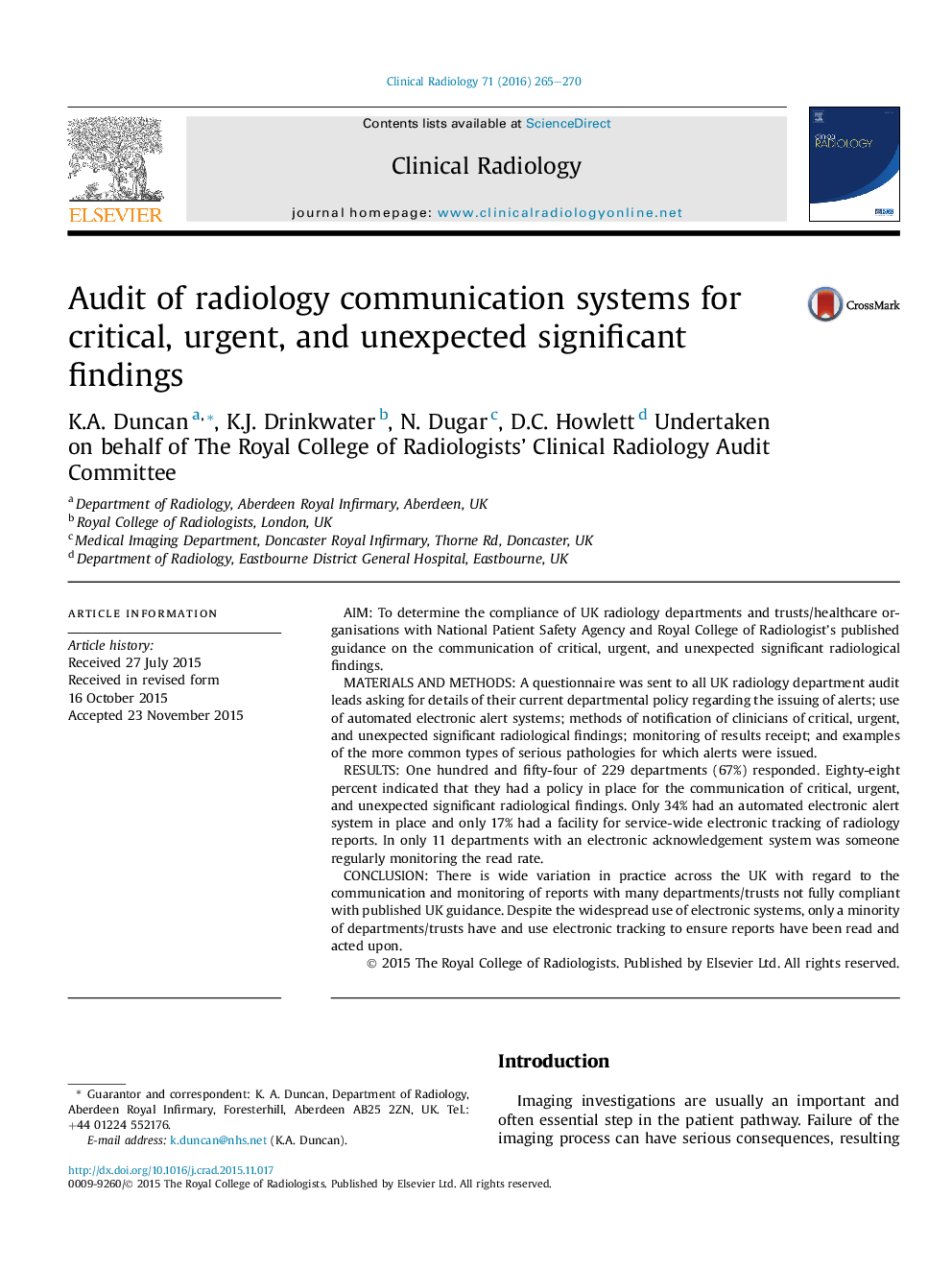| Article ID | Journal | Published Year | Pages | File Type |
|---|---|---|---|---|
| 3981381 | Clinical Radiology | 2016 | 6 Pages |
•UK wide audit of communication of significant radiology results.•88% of departments have a communication policy in place.•34% of departments have an automated electronic alert system.•17% of Trusts have facility for service wide electronic tracking of radiology reports.
AimTo determine the compliance of UK radiology departments and trusts/healthcare organisations with National Patient Safety Agency and Royal College of Radiologist's published guidance on the communication of critical, urgent, and unexpected significant radiological findings.Materials and methodsA questionnaire was sent to all UK radiology department audit leads asking for details of their current departmental policy regarding the issuing of alerts; use of automated electronic alert systems; methods of notification of clinicians of critical, urgent, and unexpected significant radiological findings; monitoring of results receipt; and examples of the more common types of serious pathologies for which alerts were issued.ResultsOne hundred and fifty-four of 229 departments (67%) responded. Eighty-eight percent indicated that they had a policy in place for the communication of critical, urgent, and unexpected significant radiological findings. Only 34% had an automated electronic alert system in place and only 17% had a facility for service-wide electronic tracking of radiology reports. In only 11 departments with an electronic acknowledgement system was someone regularly monitoring the read rate.ConclusionThere is wide variation in practice across the UK with regard to the communication and monitoring of reports with many departments/trusts not fully compliant with published UK guidance. Despite the widespread use of electronic systems, only a minority of departments/trusts have and use electronic tracking to ensure reports have been read and acted upon.
